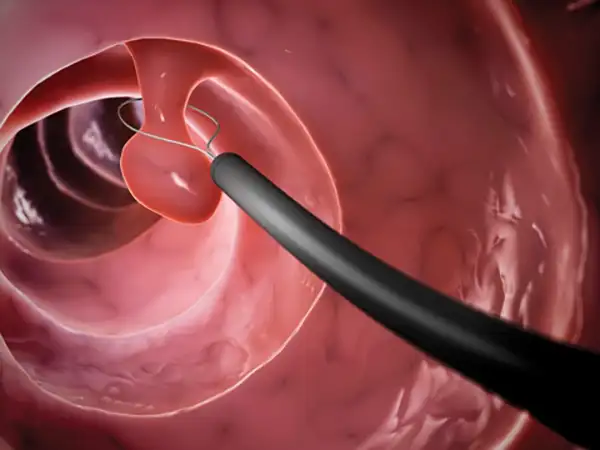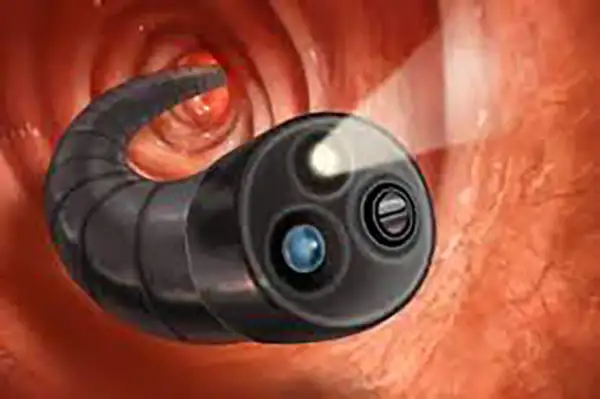Table of Contents

A colonoscope factory is responsible for designing and producing essential tools used in gastrointestinal screenings. These devices must meet strict clinical standards for clarity, maneuverability, and durability. In hospitals, the equipment needs to support frequent use while minimizing downtime. Modern production facilities are equipped to handle large-scale manufacturing with precision-based technology. This ensures that every colonoscopy machine aligns with hospital workflows and patient safety protocols.
Colonoscope factories also focus on sterilization compatibility, which is vital for preventing contamination during reuse. Products are tested against hospital-grade cleaning procedures and must withstand repeated disinfection without loss of performance.
When sourcing from a colonoscope supplier, hospitals often prioritize product consistency, post-sale support, and supply stability. A supplier serves as the bridge between the factory and the end user, ensuring that deliveries align with procurement timelines and clinical demand.
An effective supplier provides clear documentation, training support when needed, and ensures that colonoscopy equipment is compliant with international regulations. Since each hospital operates under its own procurement system, suppliers must also adapt to varied contract terms and import requirements.
The ability of a colonoscope supplier to scale logistics across regions is essential for multi-site hospital systems. Seamless distribution, combined with responsive communication, builds long-term trust between hospitals and their sourcing partners.
Colonoscope manufacturers are continually refining imaging components to enhance the diagnostic value of colonoscopy procedures. The shift toward high-definition imaging, narrow-band filters, and real-time visualization supports earlier and more accurate lesion detection.
In addition to imaging, manufacturers are also incorporating ergonomic designs and adjustable shaft stiffness into the colonoscopy system. These enhancements are intended to reduce patient discomfort while assisting clinicians in navigation. Technologies such as smart water jets, enhanced suction channels, and optimized tip control are the result of focused R&D within top-tier manufacturing facilities.
By improving usability and durability, colonoscope manufacturers meet the evolving demands of both seasoned specialists and newly trained clinicians. This ensures clinical outcomes are supported by reliable device performance.
Colonoscopy equipment is not limited to scheduled diagnostics. In hospital settings, it is often needed for urgent cases involving bleeding, obstruction, or suspected perforation. The system must be ready for immediate deployment with minimal setup.
An efficient colonoscopy system includes not just the scope, but the imaging processor, light source, and monitoring interface. These elements work together to ensure clear visualization throughout the procedure. The mobility of the equipment also matters—compact, modular systems are better suited for emergency deployments across departments.
Hospitals depend on robust colonoscopy equipment for both outpatient diagnostics and critical in-patient care. As such, systems are selected based on operational resilience and support readiness.
The colonoscopy machine is the technical backbone of any GI imaging setup. It integrates camera input, light processing, and image capture, sending high-resolution visuals to the monitoring unit. The clarity of these images directly affects the clinician’s ability to detect abnormalities.
A well-calibrated machine ensures that data is processed without lag, distortion, or loss of color detail. This is especially important in early-stage cancer screenings where subtle tissue changes must be identified. Power efficiency, cooling mechanisms, and software compatibility are other critical aspects of the colonoscopy machine.
In high-volume hospitals, machines may operate continuously throughout the day. Longevity and serviceability are therefore crucial. Medical teams must rely on machines that can be maintained efficiently without disrupting workflow.
A colonoscopy system is more than individual devices; it is a fully integrated platform designed to streamline endoscopic workflows. From image capture to data storage, each component must work seamlessly with the hospital’s digital infrastructure.
Systems must support electronic health record integration, centralized archiving, and real-time data sharing among departments. Remote diagnostics and software updates also enhance the life cycle of the system.
When evaluating systems, hospitals look for features such as multi-language user interfaces, fail-safe power options, and standardized port compatibility. A well-structured colonoscopy system allows faster diagnoses, improved patient throughput, and reduced technician training time.
Recovery from a colonoscopy is usually brief. Most patients return to routine activities within the same day, although full recovery from sedation may take several hours. No incisions are made, as the procedure is minimally invasive.
Clinicians monitor patients during recovery for signs of discomfort, bloating, or rare complications such as bleeding. Hydration and light meals are usually recommended following the exam. The colonoscopy system’s efficiency also influences patient experience, as newer models reduce examination time and improve comfort during the procedure.
During a colonoscopy, a flexible tube with a camera is inserted into the colon through the rectum. This scope transmits video to a monitor, allowing the doctor to examine the intestinal lining. Air or CO₂ may be introduced to expand the colon for better visibility.
The colonoscope can also carry tools for biopsy, polyp removal, or other interventions. All these tasks are performed under visual guidance, controlled from the colonoscopy machine’s interface. Hospitals rely on precise maneuverability and crystal-clear imaging to conduct these procedures efficiently and safely.
Hospital procurement teams often prefer working directly or indirectly with a reputable colonoscope factory due to consistent product quality and compliance documentation. These factories follow international quality standards, offer batch testing, and enable product customization when needed.
Factories with in-house R&D and automated production lines tend to deliver more innovation while ensuring traceability. For institutions operating under strict regulatory frameworks, this traceability supports easier audit preparation and safety reviews.
Collaborations with a colonoscope factory are often supported by regional suppliers who coordinate logistics and technical support, making the entire acquisition process smoother.
For hospitals and healthcare distributors seeking quality-driven colonoscopy equipment, selecting the right colonoscope factory, supplier, and system manufacturer is essential. It ensures not just diagnostic precision but operational continuity. The XBX brand, known for its clinical-grade devices, supports these needs with precision-engineered solutions tailored for modern hospitals.
In continuation of the original article, the following extended content connects seamlessly to the last paragraph and enhances depth around manufacturing, procurement, innovation, and market outlook for hospital-focused colonoscope solutions.
Colonoscopy capacity is central to hospital screening and early detection programs. Compared with other GI endoscopes, colonoscopes provide full-colon visualization for identifying small polyps and subtle mucosal changes that influence treatment planning and long-term outcomes.
Unified imaging and handling across departments reduces training time and variation in diagnostic quality.
Standardized factory builds help maintain consistent performance under high procedure volumes.
Performance relies on optical design, flexible shaft construction, sealing, and verified reprocessing compatibility. Modern manufacturing emphasizes durability without sacrificing maneuverability.
Optics: multi-element lens alignment, high-resolution sensor packaging, illumination uniformity checks.
Structure: graded-flex insertion tube, kink resistance, torque transmission, reinforced distal bending section.
Sealing: leak testing, port integrity validation, long-cycle reprocessing endurance.
Compatibility: repeat exposure to common hospital disinfection methods with stable image quality and mechanics.
Factory standards translate directly into purchasing decisions and lifecycle cost models in hospitals.
Service life and maintenance intervals under real case loads.
Clinician trial feedback on insertion ease, visualization, suction/irrigation efficiency.
Reprocessing fit: workflow time, washer/disinfector compatibility, accessory interoperability.
Assurance: documented quality systems (e.g., ISO 13485) and recognized regulatory clearances.
Direct purchase: shorter lead times and pricing transparency for single-site facilities.
Distributor model: regional stock and training for networks with varied demand.
OEM/ODM: specification control for teaching centers and research-led programs.
Beyond devices, hospitals depend on synchronized logistics, documentation, and training to protect uptime.
Multi-site delivery planning with buffer inventory and rapid replacement units.
Structured user guides, reprocessing instructions, and competency-based training.
Spare-part strategy for high-wear items to minimize procedure cancellations.
Innovation concentrates on visibility, control, and endurance to improve diagnostic yield and clinician comfort.
Imaging: high-definition signal chains and contrast-enhancement modalities for subtle lesion detection.
Ergonomics: lighter control sections, adjustable stiffness, and improved suction channel geometry.
Infection control: expanding single-use options for specific scenarios and patient risk profiles.
Assisted analysis: workflow-ready tools that help highlight suspicious mucosa during routine exams.
Global demand is rising with aging populations and screening initiatives. Growth opportunities include localized service in emerging regions and greener manufacturing approaches.
Five-to-ten-year expansion driven by screening adoption and operational efficiency goals.
Emerging markets: tailored configurations and service models for resource-limited settings.
Sustainability: materials selection and energy-aware processes aligned with hospital ESG targets.
XBX combines manufacturing experience with international quality practices and customization capacity for varied hospital needs. Support spans imaging performance, ergonomic refinement, reprocessing guidance, and coordinated after-sales coverage across regions.
OEM/ODM options that align with clinical teaching, research, and high-volume screening workflows.
Quality and compliance frameworks that underpin reliable supply and consistent device performance.
Learn more: xbx-endoscope.com
Overall, a Colonoscope Factory contributes far more than hardware: it integrates innovation, service readiness, and network-scale logistics to strengthen hospital diagnostic programs today and in the years ahead.
Reliable colonoscope manufacturers usually hold ISO 13485, CE, and FDA certifications, ensuring devices meet global hospital standards.
Yes, a professional colonoscope factory offers OEM/ODM services, allowing hospitals to request flexible insertion tubes, imaging upgrades, or training scopes.
A trusted colonoscope supplier validates every device through repeated sterilization tests, ensuring durability with EOG, plasma, and hydrogen peroxide reprocessing.
Most hospital-grade colonoscopes last 5–7 years, depending on usage frequency, reprocessing standards, and support from colonoscope manufacturers.
Colonoscope manufacturers integrate 4K sensors, optimized lens assemblies, and advanced illumination systems to provide sharp, consistent images.
Direct purchase reduces costs for smaller facilities, while OEM/ODM partnerships with a colonoscope factory provide long-term customization value.
XBX combines certified manufacturing, OEM/ODM flexibility, global logistics, and reliable after-sales support, making it a trusted colonoscope manufacturer and supplier for hospitals.
Copyright © 2025.Geekvalue All rights reserved.Technical Support:TiaoQingCMS